The Gift of South Dakota
Subscriptions to South Dakota Magazine make great gifts!
Subscribe today — 1 year (6 issues) is just $29!
Lemmon: The Cowboy Capital
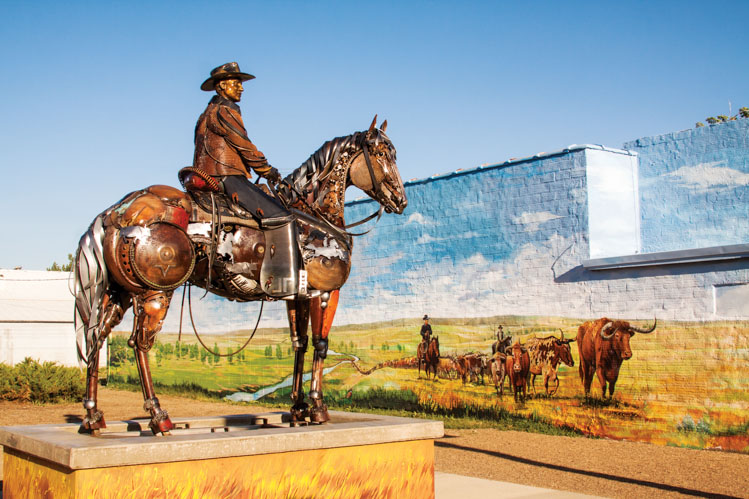 |
| Lemmon embraces art, especially the sculptures of native son John Lopez, who created this statue of town founder Ed Lemmon. |
If South Dakota built a tribute to the American cowboy, it might look like Lemmon. The little city that straddles the border of the two Dakotas has just 1,200 citizens, but it seems 10 times that size on days when there’s a rodeo or cattle auction. In fact, even on a slow day, Lemmon looks like our cowboy capital, though nobody there would use that term to describe their town because most cowboys won’t brag.
We tried to get Paul Huffman to speak philosophically on Lemmon’s prominence in the beef world, but the 77-year-old cowboy politely and plainly responded, “It’s big cattle country. It’s as simple as that.”
Huffman runs Lemmon Livestock, an auction barn that holds sales every Wednesday, and also on Thursdays during the fall and winter “cattle run,” when ranchers bring bawling spring calves to market. A big sale attracts hundreds of buyers and sellers and up to 6,000 head of cattle. Ranchers sip coffee and enjoy hot beef sandwiches — with homemade gravy and real mashed potatoes — in a restaurant at the auction barn before gathering on bleachers for the auction. Millions of pounds of beef change hands at a busy winter sale, and enough money to make a Chicago banker blush, though in Lemmon a stranger from the city would be hard-pressed to know the buyers from the sellers. Seven-figure transactions transpire in minutes, with nothing more noticeable than a nod or the raise of a finger.
Cattle outnumber people 4 to 1 in South Dakota, making beef the biggest single sector of the state’s economy. However, in Perkins County, where Lemmon is the largest city, there are 37 cattle for every man, woman and child. Seventy-eight percent of the land is grass. The federal farm census indicates that cow and calf sales total about $70 million a year in the county of just 2,400 residents.
“We especially have a lot of natural grasslands to the south and west,” says Huffman. Most of the ranch land is privately owned, but the region also includes the Grand River National Grasslands, a 154,000-acre native prairie. A hundred ranchers have allotments that permit them to graze from 50 to 300 head of cattle — some in community pastures that operate like the open range that existed until 1902.
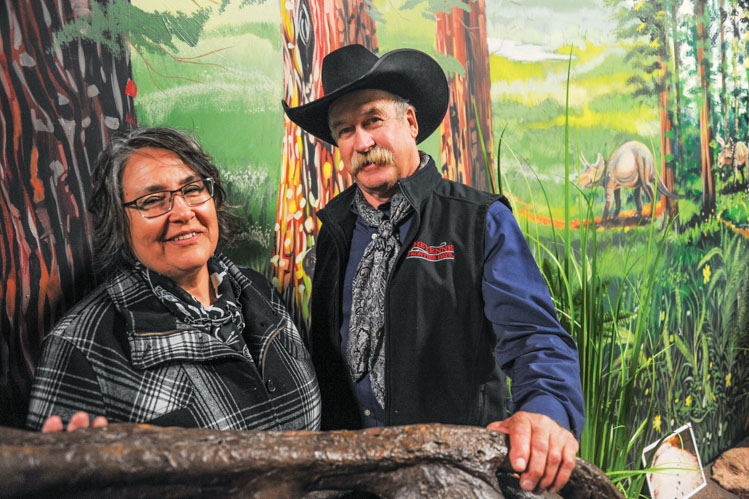 |
| Stuart and Lisa Schmidt say fossils and ancient geology are popular at the Grand River Museum. |
Lemmon was founded in 1907 by a cowboy who was instrumental in the transition from the open range to today’s fenced prairie. Ed “Boss Cowman” Lemmon started as a ranch hand in Wyoming at age 13. Soon he was a trail boss, herding longhorns from Texas to fatten on the rich grasses of the Northern Plains. He was a founder of the South Dakota Stockgrowers Association in 1902 and a leader of the beef industry when he discovered that a rail line was about to be built that would straddle the state border. He quickly bought land for a townsite, hoping he could make his new town the county seat for both Perkins County in South Dakota and Adams County in North Dakota.
Though he didn’t win either courthouse, Lemmon did get his town. Railroad officials named it after the cowboy, and he lived there until the day he died in 1945. Old-timers remember him today. Stories about his exploits are legendary, and several books about his life are for sale at the Grand River Museum, where an exhibit chronicles the life of a man the townspeople called Dad Lemmon.
The museum is a good reflection of how the cattle industry shapes Lemmon. The Schmidt family homesteaded in the Grand River Valley in 1910, contemporaries of Dad Lemmon. “Our grandchildren are sixth generation on the ranch,” says Stuart Schmidt. “My folks started the museum after many years of finding dinosaur fossils.”
Thinking the fossils and other local artifacts might be a way for the town to draw tourists, Stuart’s parents Ed and Phyllis Schmidt began to collect historical and geological items. “We moved into a downtown location in 1998 but we knew we needed more room and we wanted a highway location,” says Phyllis. “We soon bought an old machine shop that was empty for a long time. It was a mess. People thought we were crazy,” she laughed.
If so, their friends and neighbors like crazy: the Schmidts’ efforts attracted many supporters, including the Wheelers and Beelers — two other pioneer families who are very philanthropic in Perkins County, though that’s not a word that cowboys would use. Four years ago, the nonprofit museum moved into a new addition with ample space for exhibits, fossils and cast specimens from the dinosaur age.
Native American culture and history is also documented, and Stuart notes that new information continues to show up, including a hand-drawn map of how to fence the reservation that was sketched by Dad Lemmon. The map was discovered at the Wisconsin State Historical Society when Nathan Sanderson was researching and writing Controlled Recklessness, the latest book about the pioneer cattleman.
The museum has exhibits on major Hunkpapa leaders, including Sitting Bull, Rain in the Face, Gall and Thunder Hawk. It also has a timeline for Creation Science. The entryway features a life-size sculpture of a grizzly bear attacking mountain man Hugh Glass, an epic survival story of the American West that took place in 1823 in the Grand River Valley south of town. After the story was retold in the blockbuster movie The Revenant, Lemmon promoters started a Hugh Glass Rendezvous that has gained popularity every year.
The town’s signature attraction, since the 1930s, is the Petrified Wood Park, a funky collection of petrified wood, fossils, stones and other geological wonders, some mortared together in the shape of trees and spires. Rounded stones known as cannonballs, collected largely from the nearby Cannonball River Valley, are a big part of the park.
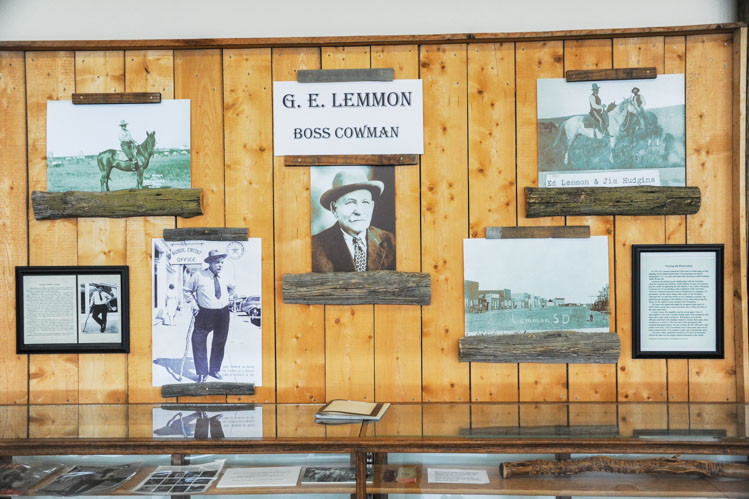 |
| The Grand River Museum features a display paying tribute to Ed Lemmon, aka "Boss Cowman." |
But not even petrified art can upstage cowboys and cattle as Lemmon’s top attraction. “Let’s face it, this town has been a cattle town since the start,” says Dave Johnson, the economic development director. “Ranching is our foundation. Everybody feels it when cattle prices go up or down, whether or not they own cattle themselves.”
Johnson says the cow culture goes beyond dollars and cents; it impacts the arts, literature, recreation and education. The local high school mascots are Cowboys and Cowgirls. Rodeo is bigger than football and some local athletes have done well on the rodeo circuit, including Stuart and Lisa Schmidt’s son, Chuck, who is a champion saddle bronc rider.
Lisa’s brother, John Lopez, is a nationally acclaimed metal sculptor. Several of his sculptures are found in town, including the museum’s Hugh Glass piece; a cowboy aboard a bucking horse, by the front door of the high school; and a representation of Dad Lemmon on a horse that stands in a little plaza downtown. Lopez has opened a studio and gallery known as the Kokomo Inn next to the plaza, one of several recent civic additions and improvements — many of them either assisted or spearheaded by Dave Johnson’s organization, the Lemmon Area Charitable and Economic Development.
Johnson worked as a commercial photographer in Dallas and Chicago before coming home. One of his first challenges was the Palace Theater, a dilapidated movie house where he ran the reels as a teenager. The community supported his efforts to digitize the projector system, renovate the interior and reopen the theater for movies, live concerts and other events.
When the State Extension Department held its annual Energize Conference in Lemmon last summer, Johnson gathered some of the town’s newest business men and women in the theater for a panel discussion. He began by explaining that even he is sometimes amazed at how much a little city can accomplish. He credited a creative culture and a community spirit. “The trend for a lot of these little places in the 1980s and 1990s was just to become a bedroom town to a bigger city but Lemmon never had that option because we are too far away from a bigger town,” he said. The only alternative was to maintain a high quality of life despite the smaller population. Encouraging museums, art, restaurants, theater, entrepreneurship and music seemed daunting, but it’s probably not any more difficult than fencing the prairie or building a petrified park.
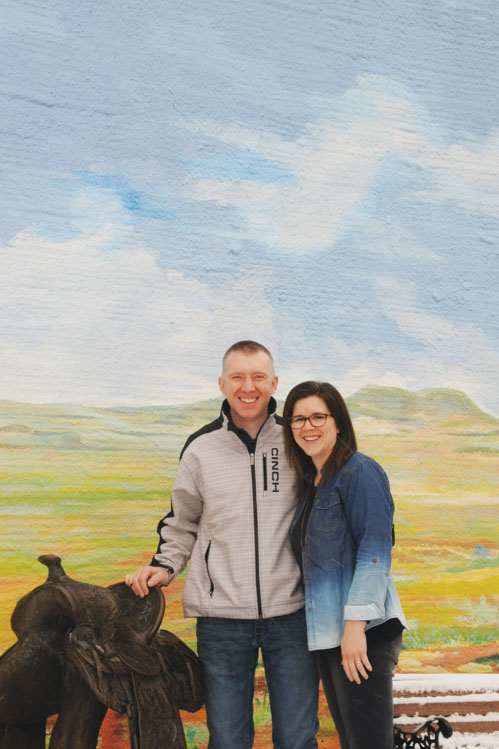 |
| Jack and Kim Anderson operate Midwest Rodeo Entries, which handles reservations for the South Dakota Rodeo Association, as well as The Current Connection, a computer and office supply store. |
Johnson told the Energize attendees, who came from equally small communities across South Dakota, that he learned an important lesson from participating in big projects: “It’s about doing what’s right — it’s never about the money.”
Lemmon’s success stories include a new housing neighborhood and the downtown plaza known as Boss Cowman Square. The community has also supported several new businesses, including a hotel, grocery store, butcher shop, photography studio and a boutique with sequin-lined denim jackets for cowgirls. They coexist with old Lemmon standbys like Wheeler Manufacturing, a family enterprise that employs more than 100 jewelry-makers.
Romancin’ the Range, the new boutique, shares space with a flower store and coffee shop. The owner is Kate Westphal, a young nurse who grew up on a nearby ranch and moved away to Bismarck, North Dakota. “I thought I was never coming back,” she says, “but I started to miss home. Nobody greeted me or asked how Dad’s sheep were doing or how my mom was feeling. Now, if my car breaks down I have 10 people to call, where in the city I had no one. I also realized there were opportunities for growth.” She works as an R.N. at the local nursing home, manages the boutique and makes leather jewelry.
The Current Connection is another Lemmon success. Jack and Kim Anderson started the computer and office supply store 15 years ago. When the local Ben Franklin store closed, they added school supplies. Jack, who grew up locally and rode bulls in high school and college, recognized that the rodeo industry wasn’t taking advantage of technology. He developed software and started a company called Midwest Rodeo Entries, which handles reservations for the South Dakota Rodeo Association, the Colorado Rodeo Association and the Indian National Finals Rodeo.
“Jack wanted to stay active in the rodeo industry, but not ride bulls,” Kim says. “This was a way for him to do that.” He also created summer jobs for teachers and students, who staff the phones. “It saves cowboys and cowgirls a lot of time,” says Kim, “and it gets them to the right place at the right time.”
The town’s new LemmonMade Butcher Shop was started by Carl and Kylee Kimmerle, who came from Utah two years ago to live on land homesteaded by Kylee’s great-grandfather. The shop quickly gained a reputation for beef jerky, breakfast sausage and other specialties. The Kimmerles hope to eventually raise and process their own cattle and hogs, but for now the new business and three young children occupy most of their time.
The downtown area has also been bolstered by the Beeler Center. “It was put up about a dozen years ago because of the success of the Boss Cowman Rodeo,” Johnson says. “Every year, we would rent a tent for the rodeo and someone had the good idea that it might make sense to just build a building.” Ever since, the town has hosted more weddings than 1,200 people would ever propose. “Lots of times, the bride and groom are not from here but they know they can stay in the hotel and there are plenty of restaurants so it’s just a good place to get married.”
The town’s six restaurants include Benny’s, just across the street from the Beeler Center. Matt Johnson (David’s nephew), who recently purchased the long-established eatery, says it’s a challenge to run a steakhouse when most of your customers are ranchers who raise some of the world’s best beef.
“You gotta start with the good stuff,” he laughs. His most popular menu item is called the Steak Sandwich, but again that’s cowboy modesty: the “sandwich” is a delicious sirloin coulotte.
Chislic is also popular at Benny’s, but Johnson doesn’t use lamb, like restaurants in Hutchinson County, where Germans-from-Russia first brought chislic to the Dakotas. He grills cubes of —you guessed it — beef sirloin ball tip.
That seems appropriate, however, in a city corralled by cowboys.
Editor’s Note: This story is revised from the March/April 2020 issue of South Dakota Magazine. To order a copy or to subscribe, call (800) 456-5117.


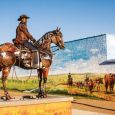
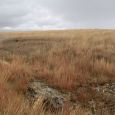
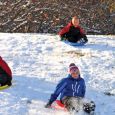
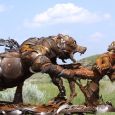




Comments